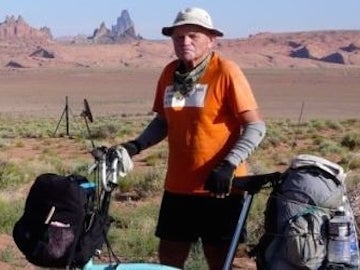Let's give people more options to travel actively in cities.
"If you look back through history – particularly to the 19th century and the early part of the 20th century – urban planning was a part of the health improvement side of government. A whole host of things happened as a result: better drainage and clean water so people didn’t get cholera, better housing so that people didn’t suffer from rickets and lung problems.
The design of cities, for a long time, had been seen as delivering better health outcomes and now we are in a position where the design of a lot of cities is actually delivering bad health and we need to change that.
I’m on the board of the Center for Active Design in New York which was one the early organizations which really got into how we use urban design to deliver healthier environments and integrate activity into everyday urban planning.
One of the first things that Center for Active Design did was change the building regulations in New York so that people could actually see stairs in offices when they arrived at the reception. I think if you go into most modern office buildings you can’t find the stairs anywhere. Even if you go up one floor you have to go up in the lift. This new regulation has radically changed things and introduced movement into office buildings.
That’s a powerful solution for individual buildings, but how do you build these things into your city planning – both in terms of new city planning, and then how do you adapt existing cities to do that?
The move towards reducing car ownership and use in central urban areas and ensuring that people travel actively is a key part in any sensible urban strategy these days and in fact London actually does quite a lot of it already.
For instance the majority of people who go to work in the City of London will travel to a station walking or cycling and then will arrive in the city and then they will walk to their office. That happens in the City because there’s nowhere to park and the City has actually designed out the ability for people to use cars conveniently within the City. They are moving continually now towards a much more pedestrianized environment, which since the City is small and compact it’s perfectly feasible.
In terms of active travel itself, I think that the integration of public transport with buses and trains, and with people cycling and walking is a key part of any strategy. We should make it easy for people to seamlessly go from one mode to another.
Cycling infrastructure is a key focus. There is plenty of evidence from around the world that safer infrastructure is a key driver of change, that you deliver the infrastructure and people will use it. The key thing that stops people from cycling is fear – so you have to overcome that. I think reducing car speeds has been pretty important, but then you need to enforce it, which doesn’t happen as much as it should.
Expensive projects such as cycleways can get push-back and struggle to be seen as something for everyone, not just Lycra-legged people whizzing around. We need to make sure they are seen as part of integrated ecosystem of routes with quiet ways leading into them. We ought to be moving towards a seamless network of routes which support cycling and walking and enable people of all ages to make active travel decisions."
Peter is a writer and commentator on architecture and the built environment. He is currently curator-in-chief of New London Architecture and the London Society. He is a keen cyclist and campaigner for cycling issues.
Find out more about our Campaign for Movement.












